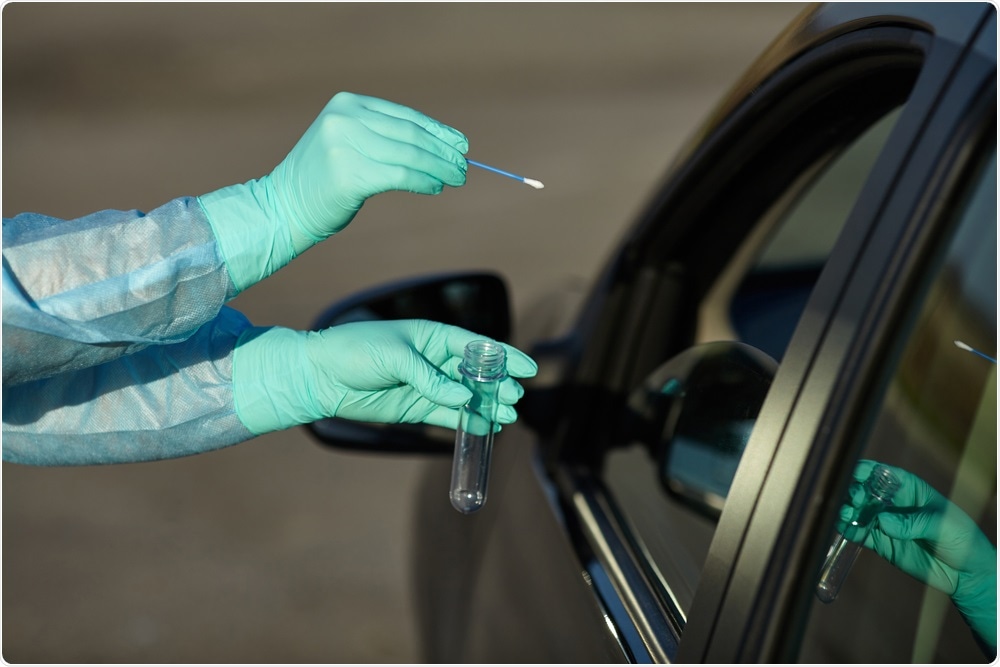Previous studies have shown that many severe acute respiratory syndrome coronavirus 2 (SARS-CoV-2) cases were tied to asymptomatic carriers or those who do not manifest symptoms of the viral infection. Now, a new study reveals that in the first Italian town hit by the virus, as much as 40 percent of the population had no symptoms of the coronavirus disease (COVID-19).
The researchers at the University of Padua and Imperial College London revealed that many people in the town of Vo, northern Italy, and the first one to be locked down in Europe due to the coronavirus outbreak, had been infected with the SARS-CoV-2 virus, but did not display any symptoms. The results add to previous data that the number of those who had contracted the virus may be higher than what the official tally shows.

Image Credit: Roman Bodnarchuk / Shutterstock
Silent widespread
The new data sheds light on how widespread the reach of the virus is, mainly due to the large volume of asymptomatic carriers.
The town of Vo in Italy has a population of 3,200 people. It was the country's first area to report the first death due to COVID-19 in late February. Since them, the virus has spread across the country and has so far infected more than 240,000 people and killed over 34,700. When the town was placed in a two-week lockdown, the researchers were able to test more than 85 percent of the population for COVID-19.
From there, the team has found that 2.3 percent of the town was infected at the start of the quarantine, compared to 1.2 percent at the end of the lockdown. Further, they found that more than 40 percent of those who tested positive with the coronavirus had no symptoms.
"This study sheds new light on the frequency of asymptomatic SARS-CoV-2 infection, their infectivity (as measured by the viral load), and provides new insights into its transmission dynamics and the efficacy of the implemented control measures," the team wrote on the paper.
The results also unveiled that none of the children below 10 years old tested positive for SARS-CoV-2, even if they lived with relatives who tested positive. This adds to the evidence that most children are spared from the wrath of the virus.
Case isolation and mass testing
The team published their study in the journal Nature and highlighted how mass testing and immediate case isolation effectively contain the spread of the virus.
The researchers revealed that asymptomatic carriers had similar viral load as symptomatic patients and those who were pre-symptomatic, or those who have not yet manifested the symptoms, had a lower viral load at the beginning of the illness. The findings shed light on the role of asymptomatic and pre-symptomatic people in the spread of the virus.
Further, those who tested positive for the virus were quarantined, even if they had no symptoms, underscoring how important it is to perform mass testing. This way, those who have the potential to transmit the virus to others are isolated until they are free from the virus.
"Testing of all citizens, whether or not they have symptoms, provides a way to manage the spread of disease, and prevent outbreaks from getting out of hand. Despite 'silent' and widespread transmission, the disease can be controlled," Professor Andrea Crisanti, of the Department of Molecular Medicine of the University of Padua and the Department of Life Sciences at Imperial College London, said in a statement.
The town was successful in suppressing and controlling the virus spread in just a matter of weeks. It also had an informed testing policy, where all contacts of those who tested positive for the coronavirus were offered to test.
Dr. Ilaria Dorigatti, a co-author of the study, highlighted the importance of testing since secondary spikes of cases were reported in other areas, such as Leicester. Mass testing and the timely isolation of cases are vital strategies to contain the virus spread effectively.
"The Vo study demonstrates that the early identification of infection clusters and the timely isolation of symptomatic as well as asymptomatic infections can suppress transmission and curb an epidemic in its early phase," Dorigatti said.
Source:
Journal reference: